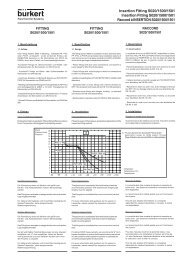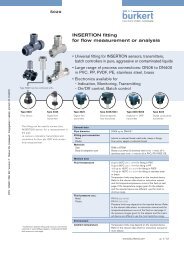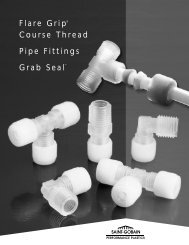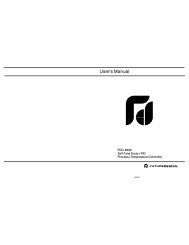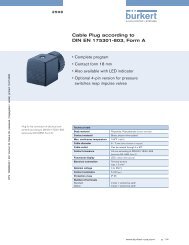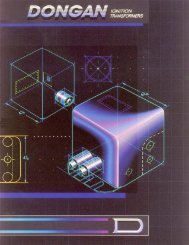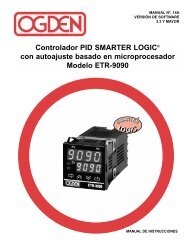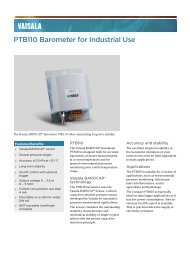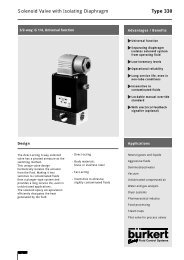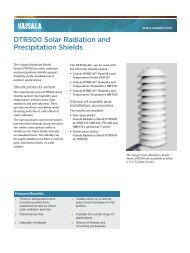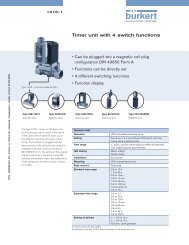LEESON Basic Training - iProcesSmart.com
LEESON Basic Training - iProcesSmart.com
LEESON Basic Training - iProcesSmart.com
Create successful ePaper yourself
Turn your PDF publications into a flip-book with our unique Google optimized e-Paper software.
Output Speed and Torque: These are the key criteria for matching a gearreducer to the application needs.Center Distance: The basic measurement or size reference for worm gearreducers. Generally, the larger the center distance, the greater the reducercapacity. Center distance is measured from the centerline of the inputshaft to the centerline of the output shaft.Horsepower: A reducer’s input horsepower rating represents the maximumprime mover size the reducer is designed to handle. Output horsepower,while usually listed by reducer manufacturers, has little applicationrelevance. Speed and torque are the real considerations.Overhung Load: This is a force applied at right angles to a shaft beyondthe shaft’s outermost bearing. Too much overhung load can cause bearingor shaft failure. Unless otherwise stated, a reducer manufacturer’soverhung load maximums are rated with no shaft attachments such assheaves or sprockets. The American Gear Manufacturers Association providesfactors, <strong>com</strong>monly called “K” factors, for various shaft attachments bywhich the manufacturer’s maximum should be reduced. Overhung loadcan be eased by locating a sheave or sprocket as close to the reducer bearingas possible. In cases of extreme overhung load, an additional outboardbearing may be required.The following formula can be used to calculate overhung load (OHL):OHL (pounds) =Torque (inch-pounds) x K (load factor constant of overhung load)R (radius of pulley, sprocket or gear)where, K equals 1.00 for chain and sprocket, 1.25 for a gear, and 1.5 for apulley and v-belt.Thrust Load: This is a force applied parallel to a shaft’s axis. Mixers, fansand blowers are among driven machines that can induce thrust loads.Exceeding manufacturers’ maximums for thrust loading can cause prematureshaft and bearing failure.Mechanical and Thermal Ratings: Mechanical ratings refer to the maximumpower a reducer can transmit based on the strength of its <strong>com</strong>ponents.Many industrial reducers, including <strong>LEESON</strong>’s, provide a 200% safetymargin over this rating for start-ups and momentary overloads. Thermal-51-



